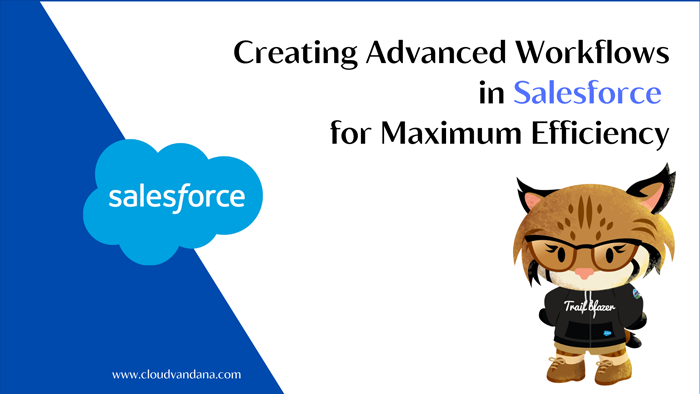Learn how to create advanced workflows in Salesforce to maximize efficiency and profits. Get the ultimate guide and find out more!
Advanced Workflows in Salesforce
Salesforce, the popular Enterprise Cloud computing platform, enables businesses of all sizes to streamline operations and automate workflows. Create powerful automation with Workflow Rules and Flow Builder in Salesforce to help your team maximize efficiency and profits. Get the ultimate guide for using workflows here.
Understand Your Automation Requirements
Before you start creating automated workflows, it’s essential to understand your business’s requirements. Consider what tasks should be automated and which ones are better performed manually. Identify areas of improvement, cost savings, and potential obstacles to achieving maximum efficiency. This will help you design an effective workflow that considers all your business needs.
Configure Your Salesforce Fields and Objects
Configuring your Salesforce fields and objects is essential for creating successfully advanced workflows. When configuring fields, consider how the data you need to collect relates to your goals. This will help you create a streamlined workflow tailored to achieve maximum efficiency. Additionally, when creating objects, consider what relationships the objects should have with each other and determine if any triggers should fire off an automated workflow.
Set Up Triggers & Actions to Automate Workflows
An effective way to maximize efficiency in this eco system is to set up triggers and actions to automate certain workflows. Triggers automatically execute an action when certain conditions are met, such as when a field value changes or upon completing specific tasks. Setting up triggers allows you to achieve maximum efficiency and keep your Salesforce instance running smoothly. Additionally, you can use Actions to perform certain administrative tasks, such as sending emails and making API calls. Setting up these triggers and actions is easy using Salesforce’s workflow automation tools!
Use Time-Based Workflows for Optimized Lead Management
Time-based workflows are best used when you want to optimize lead management. Using triggers, you can set up reminders to automatically activate a workflow whenever a specific date is reached. For example, suppose you want to follow up with leads regularly and track their progress in Salesforce. In that case, you can use time-based workflows to ensure that necessary actions like emails and notifications occur regularly. This ensures maximum efficiency when it comes to managing leads.
Establish Rules for Notifications & Email Alerts
Once you have set up your time-based workflow, it is important to establish rules for notifications and email alerts. These rules should be based on the actions that should occur in response to certain dates. For instance, if the lead receives a promotional offer from your company before a purchase date set in your workflow, you can alert them at the appropriate date with a reminder about the promotion. This increases efficiency and helps ensure maximum profits for your business.
Are you looking for a reputed Salesforce partner to experience the maximum benefits of this customer relationship management platform? Don’t hesitate to contact CloudVandana for a customized solution best suited for your business. Call Now.










